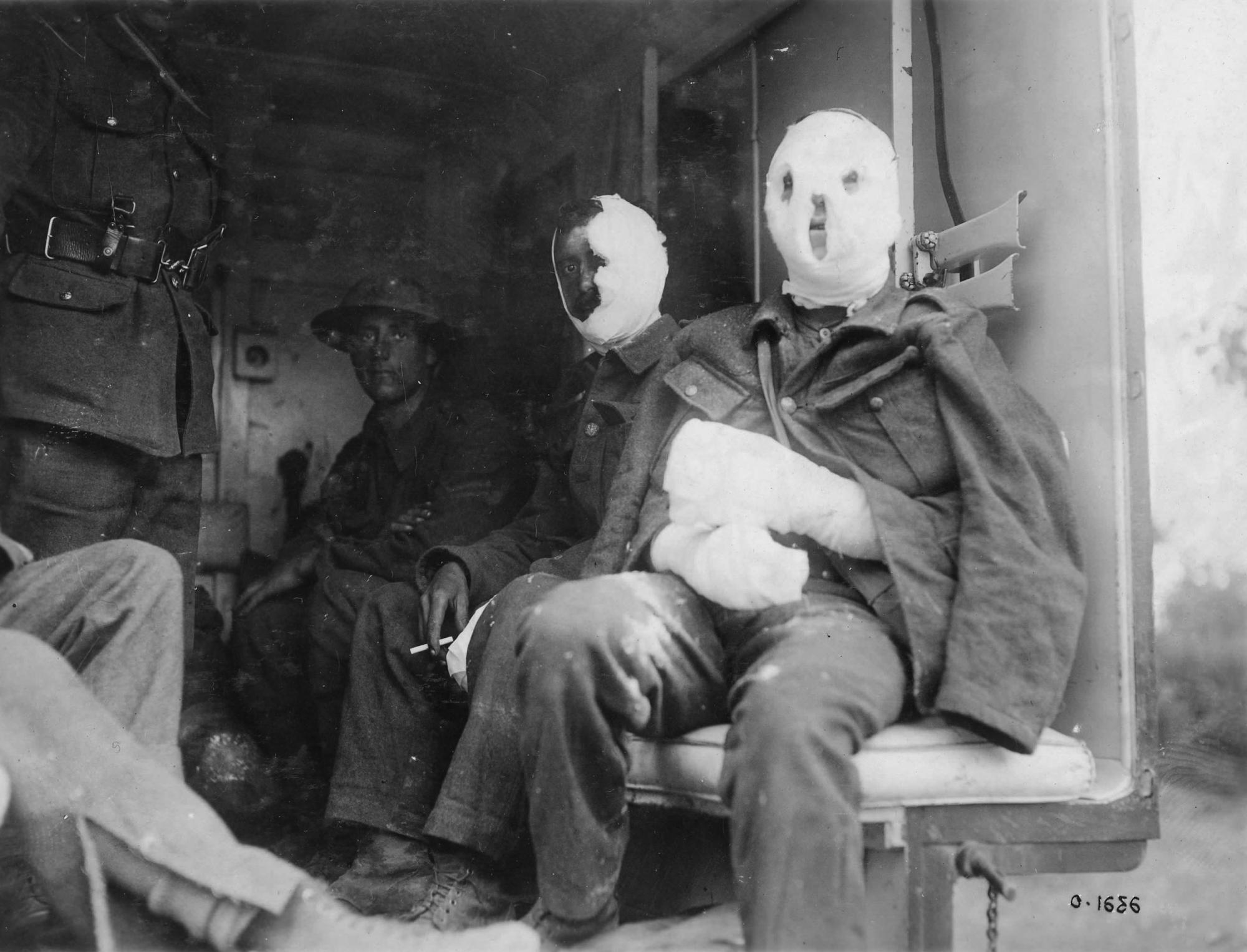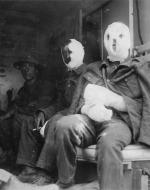Created by Aaliyah Baldwin on Fri, 12/03/2021 - 16:49
Description:
Two soldiers with severe injuries and chemical burns are shown in this photo. This horrifying photograph shows the damage done in chemical warfare during WWI. Chlorine gas, most commonly known as mustard gas, was created and used in WWI by Germans in 1917. This sulfur-based gas is extremely toxic and causes very painful burns to the eyes and skin. Chlorine gas also causes severe injuries to the gastrointestinal and respiratory systems. The injuries are characterized by pus-filled burns underneath the skin, bulla. Temporary or permanent blindness is also possible. Fortunately, gas masks were invented by Dr. Cluny Macpherson and quickly distributed in response to the brutal effects of mustard gas. One can only imagine the horrors of these events. Wilfred Owen vividly describes the dreadful setting in his poem, Dulce Et Decorum Est, describing the dense gas in the air as "a green sea." He writes, "Gas! GAS! Quick, boys!—An ecstasy of fumbling Fitting the clumsy helmets just in time, But someone still was yelling out and stumbling And flound'ring like a man in fire or lime.— Dim through the misty panes and thick green light, As under a green sea, I saw him drowning." In this horrific scene, the writer mentions watching a fellow soldier dying in front of him at the unfortunate expense of not assembling his gas mask on time. In this photograph, the injured men are shown with several medical dressings. These burns and injuries were treated by eye irrigations if needed. Another effective treatment was a concoction created by the war nurses containing anti-inflammatory decongestants and essential oils. It was then provided to soldiers who suffered respiratory injuries.
Sources:
Moore, Constance J. “Army Nurses Care for Mustard Gas Patients during WWI.” The Army Nurse Corps Association, Inc., https://e-anca.org/History/Topics-in-ANC-History/Mustard-WWI.
“Memorial University Libraries : Health Sciences Library.” Memorial University Libraries, Memorial University Libraries, https://www.library.mun.ca/hsl/archives/about/gasmask/.
Solberg, Y., et al. “Ocular Injury by Mustard Gas.” Survey of Ophthalmology, U.S. National Library of Medicine, https://pubmed.ncbi.nlm.nih.gov/9220568/.
Owen, Wilfred. “Dulce Et Decorum Est by Wilfred Owen.” Poetry Foundation, Viking Press, 1921, https://www.poetryfoundation.org/poems/46560/dulce-et-decorum-est.
Copyright:
Associated Place(s)
Part of Group:
Featured in Exhibit:
Artist:
- Canadian War Museum


